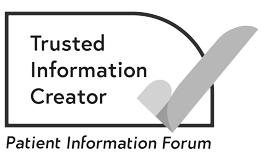Acute promyelocytic leukaemia (APL)
Acute promyelocytic leukaemia (APL) is a type of acute myeloid leukaemia (AML).
What is acute promyelocytic leukaemia (APL)?
Acute promyelocytic leukaemia (also called APL or APL leukemia) is a type of acute myeloid leukaemia (AML). It affects about 6 in 100 (6%) adults with AML.
The tests used for APL are the same as for AML. But your induction and consolidation treatment may include drugs called ATRA (all-trans retinoic acid) or ATO (arsenic trioxide). These are not chemotherapy or targeted therapy drugs. They are sometimes called a differentiating agent.
Your treatment depends on whether you have low-risk, intermediate-risk, or high-risk APL. Risk is based on the level of your white blood cells when you are diagnosed. If you have low or intermediate risk, you usually have a combination of ATRA and ATO. You do not usually need any chemotherapy drugs.
If you have high-risk APL, you may have ATRA. You usually have it with a chemotherapy drug such as idarubicin. This combination is called AIDA.
Or you may have ATRA and ATO together. You usually have maintenance treatment afterwards with ATRA on its own or with chemotherapy for about a year.
ATRA (all-trans retinoic acid)
ATRA is also called tretinoin or Vesanoid®. It is a type of drug called a retinoid, which is like vitamin A.
ATRA helps make the leukaemia cells develop normally. You start taking it straight away. It can reduce leukaemia symptoms quickly. You take it every day as capsules with food. It may be given with chemotherapy or with ATO.
Side effects can include:
- headaches
- dry skin and mouth
- feeling sick (nausea)
- bone pain
- dry eyes.
ATO (arsenic trioxide)
ATO is sometimes called Trisenox®. It damages the leukaemia cells. It is given into a vein through a drip. Side effects can include:
- heart changes
- diarrhoea
- tiredness
- muscle and bone pain
- a high temperature
- raised blood sugar.
About our information
-
References
Below is a sample of the sources used in our acute myeloid leukaemia (AML) information. If you would like more information about the sources we use, please contact us at cancerinformationteam@macmillan.org.uk
Heuser M et al. Acute myeloid leukaemia in adult patients: ESMO Clinical Practice Guidelines for diagnosis, treatment and follow-up. Annals of Oncology, 2020, vol 3, issue 6. Available from www.esmo.org/ [accessed 2021].
NICE (National Institute for Health and Care Excellence). Blood and bone marrow cancers. Available from https://pathways.nice.org.uk/pathways/blood-and-bone-marrow-cancers [accessed August 2021].
-
Reviewers
This information has been written, revised and edited by Macmillan Cancer Support’s Cancer Information Development team. It has been reviewed by expert medical and health professionals and people living with cancer. It has been approved by Senior Medical Editor, Dr Anne Parker, Consultant Haematologist.
Our cancer information has been awarded the PIF TICK. Created by the Patient Information Forum, this quality mark shows we meet PIF’s 10 criteria for trustworthy health information.
The language we use
We want everyone affected by cancer to feel our information is written for them.
We want our information to be as clear as possible. To do this, we try to:
- use plain English
- explain medical words
- use short sentences
- use illustrations to explain text
- structure the information clearly
- make sure important points are clear.
We use gender-inclusive language and talk to our readers as ‘you’ so that everyone feels included. Where clinically necessary we use the terms ‘men’ and ‘women’ or ‘male’ and ‘female’. For example, we do so when talking about parts of the body or mentioning statistics or research about who is affected.
You can read more about how we produce our information here.
Date reviewed
This content is currently being reviewed. New information will be coming soon.

Our cancer information meets the PIF TICK quality mark.
This means it is easy to use, up-to-date and based on the latest evidence. Learn more about how we produce our information.
How we can help



